
Overclocking
Not much has changed in overclocking terms compared to Broadwell-E. For a quick boost, you can simply increase the multiplier, set a vcore, and away you go. However, there are also the usual PEG/DMI ratios if you'll be fiddling with the baseclock, from which the PEG/DMI clock are derived and which can affect stability. However, with the Kaby Lake-X CPUs, the PCI-E clock is fixed at 100MHz no matter what you do with the baseclock.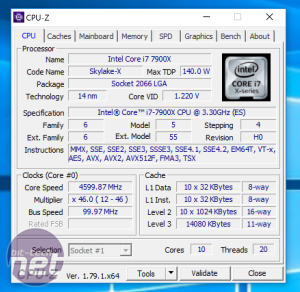 There seems to be much more headroom with Skylake-X than its predecessor, and the main limiting factor is temperature if our CPU is anything to go by. We plumbed in 1.3V as a starting point and crept up from 4GHz all the way to an astounding 4.7GHz, which is 300MHz higher than we managed with the Core i7-6950X. Even more impressive was the fact that it was still completely stable with just 1.28V - far lower than the 1.44V we needed with the older CPU.
There seems to be much more headroom with Skylake-X than its predecessor, and the main limiting factor is temperature if our CPU is anything to go by. We plumbed in 1.3V as a starting point and crept up from 4GHz all the way to an astounding 4.7GHz, which is 300MHz higher than we managed with the Core i7-6950X. Even more impressive was the fact that it was still completely stable with just 1.28V - far lower than the 1.44V we needed with the older CPU. However, temperatures were definitely a concern with Cinebench and Terragen pushing 100°C with our 240mm AIO liquid cooler. As a result, while stable and potentially tameable under custom water-cooling, we decided to go for 4.6GHz for benchmarking, which required a super-low 1.22V. Interestingly our Core i7-6950X ran much cooler despite using a significantly higher voltage, albeit at 4.4GHz. This could well be due to thermal paste having been used between the heatspreader and CPU core with the new Skylake-X CPUs, in which case delidding could potentially yield significant benefits given the high heat density.
Indeed, as we were writing this, overclocker der8auer released a video on YouTube of him successfully delidding a Core i9-7900X and achieving a 5GHz overclock using an off-the-shelf AIO liquid cooler. If you're prepared to risk it with your £1,000 / $1,000 CPU, then there are likely serious gains to be had.
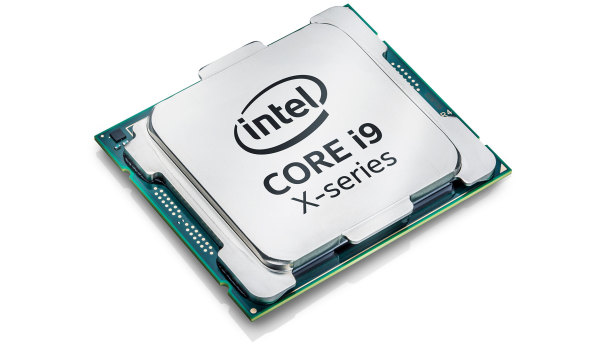
Performance Analysis
Edit: We discovered that despite both our X99 and X299 test systems being set to the default Windows 10 balanced profile, the X299 system seemed to suffer in some tests compared to using the high performance profile. As such, we've re-run all the tests and updated scores for CPU-Z, Fallout 4, 3DMark Time Spy and PCMark 10 photo editing, all of which improved on the X299 system
We're in the process of transitioning to some new benchmarks and have also added an Nvidia GTX 1080 into the mix since our recent Ryzen testing, so some of our graphs currently have fewer results in than others. However, in all our tests we have the three main fight-hungry CPUs - the two Intel 10-cores, the Core i7-6950X and Core i9-7900X, and, as AMD's Threadripper is still absent, we've decided to include the eight-core Ryzen 7 1800X.
Starting with our content creation tests, the fact that the Intel Core i9-7900X can run all cores at an impressive 4GHz at stock speed means that it's pretty potent out of the box. It was much faster than the Core i7-6950X in the HandBrake 4K video transcoding test, shaving 11 seconds off the latter's 71-second completion time. It was also quicker in the PCMark 10 photo editing test.
The Skylake-X domination continued, though, with some awesome times in Terragen 4 - out of the box, the Core i9 was faster than an overclocked Core i7-6900K, and again it was significantly quicker than the Core i7-6950X thanks to that massive advantage in all-core boost. It was a similar story in Cinebench - only the overclocked Core i7-6950X was faster.
Conclusion
If Skylake-X appeared in a year's time as a blatant reaction to AMD's shenanigans, one would rightly suggest that what we've seen today is an indicator of Intel ramping things up to prevent AMD eating into its market share. However, Skylake-X has landed barely a couple of months after Ryzen - it's not been created in 12 weeks but has been on the cards for a long time, certainly way before the Ryzen hype train arrived in 2016 leading up to the March launch this year.As a result, this beastly CPU can be considered a real, genuine challenge for AMD and for several reasons. Firstly, it costs 50 percent less than its predecessor, so complaints about Intel's CPUs being pricey are clearly being addressed somewhat, especially as the restructured cache and higher clock speeds offer much better performance in many tests, and it's also a better overclocker if our sample is anything to go by. It's likely going to be more expensive than the equivalent AMD Threadripper in terms of cores and threads, but Intel has the advantage in core speed both at stock speed and almost certainly when overclocked too, unless Threadripper can summon 4.5GHz all-core overclocks from somewhere.
The fact that you can get a 10-core CPU to 4.6GHz with relative ease at less than 1.25V with a decent cooler is remarkable, and we have no doubt that it's the lack of solder between the heatspreader and core that's holding things back. Thankfully, the Core i9-7900X still represents a big leap in performance in many real-world tests, especially video transcoding and rendering both at stock speed and when overclocked despite thermals limiting overclocking.
So, we've established that the Core i9-7900X is potentially a great overclocker and has superb performance at stock speed too, but what about Intel versus AMD? Well, in games such as Fallout 4, there's still very little difference. The Ryzen 7 1800X was a little slower in Ashes of the Singularity and Deus Ex, even when overclocked. However, the real question is value. The Core i9-7900X is more than twice the price of the Ryzen 7 1800X, yet in Terragen 4, Cinebench, and HandBrake and in games, it's far from being twice as fast. In fact, the deficits are almost exactly what we'd expect from a two-core/four-thread deficit.
We can't really speculate on Threadripper, of course, but with rumours pointing to an August launch, if you're in the market for a high-end system, it could well be worth waiting. In the meantime, though, Intel has shown its hand, and it's a very good one indeed.


MSI MPG Velox 100R Chassis Review
October 14 2021 | 15:04

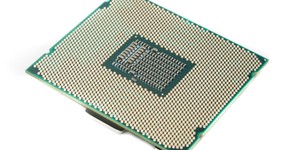
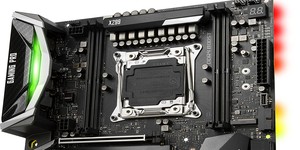
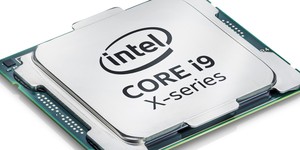




Want to comment? Please log in.